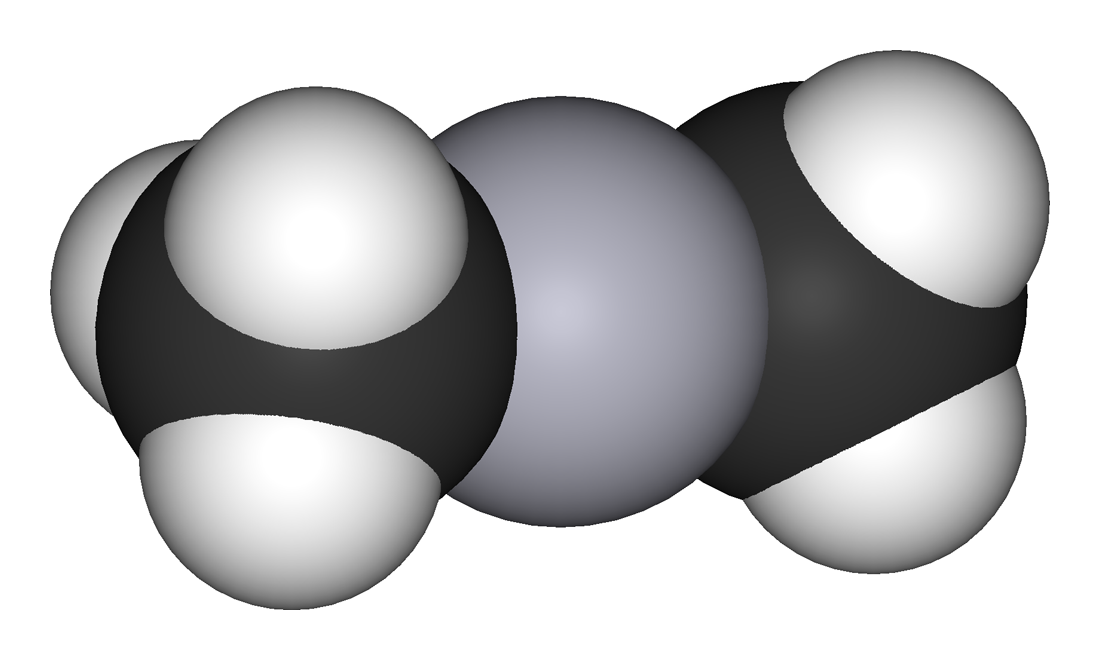There are few moments in life more bewildering than the instant you realize, while asleep, that you are dreaming. The walls of reality ripple, gravity bends to your will, and the ordinary becomes infinite. A lucid dream is a phenomenon in which the dreamer gains awareness that the events unfolding are not real, and with this recognition, a unique power emerges—the ability to consciously shape and direct the dream. For centuries, poets, mystics, and scientists alike have been fascinated by this strange state of consciousness that blurs the line between waking thought and the deep, immersive theater of the sleeping mind.
Lucid dreaming is neither wholly fantasy nor fully waking reality. It exists on a threshold, where the imagination collaborates with self-awareness, producing an experience that feels intensely real yet is known to be illusion. This paradox makes lucid dreaming one of the most compelling mysteries of human consciousness. What does it mean that we can “wake up” within our own dreams? How is it possible for the sleeping brain to reflect upon itself? These questions have driven decades of psychological, neurological, and philosophical inquiry, and they continue to invite awe.
The Ancient Roots of a Modern Mystery
Although lucid dreaming has gained renewed interest in the age of neuroscience, the idea itself is ancient. In Buddhist and Hindu traditions, spiritual practitioners described methods of cultivating awareness during dreams as a path to enlightenment. Tibetan Buddhism developed the practice of “dream yoga,” a disciplined training where dreamers learn to remain conscious in dreams in order to dissolve illusions and realize the ultimate nature of the mind. For these traditions, lucid dreaming was never merely a curiosity—it was a profound spiritual tool.
In Western history, philosophers also touched upon the dream state. Aristotle noted in his writings that one might become aware of dreaming and distinguish it from waking life. The early Christian mystic Augustine described the vividness of dreams and their capacity to deceive. Yet for centuries, dreams were largely interpreted through the lenses of prophecy, spirituality, or psychology rather than scientific investigation.
It was not until the twentieth century that lucid dreaming was recognized as a real and measurable state of consciousness. Pioneers such as Dutch psychiatrist Frederik van Eeden, who coined the term “lucid dream” in 1913, began documenting personal experiences. Later, with advances in sleep research, scientists discovered that dreams could be studied in the laboratory. The stage was set for lucid dreaming to move from the mystical into the realm of empirical science.
The Science of Sleep and Dreaming
To understand lucid dreaming, one must first explore the architecture of sleep itself. Human sleep cycles through distinct stages, moving from light sleep into deep slow-wave sleep and eventually into rapid eye movement (REM) sleep. It is in REM sleep that dreaming is most vivid. During this stage, the brain is almost as active as when awake, yet the body is paralyzed, preventing us from physically acting out our dreams.
In normal REM dreams, the dreamer is swept along passively by the unfolding narrative. The brain generates a rich sensory world, but the critical faculties of self-awareness are muted. In a lucid dream, however, something remarkable happens: the dreamer regains metacognition, the ability to reflect upon their own state of mind. This allows them to recognize the dream as a dream while it continues.
Neurological studies have shown that lucid dreaming involves heightened activity in the prefrontal cortex, the region associated with self-awareness and executive function. In essence, the lucid dream is a hybrid state, blending the immersive imagery of REM sleep with the reflective capacities of waking consciousness. It is as if the dreaming mind invites a guest—the waking self—into its world of illusion.
The First Proof of Lucid Dreaming
For many years, lucid dreaming was dismissed by skeptics as fantasy or false memory. The breakthrough came in the late 1970s and early 1980s, when sleep researchers devised a way to test it scientifically. Since the body is paralyzed during REM sleep except for the eyes, researchers asked trained lucid dreamers to signal their awareness by moving their eyes in a prearranged pattern while asleep.
The results were astonishing. In the laboratory, scientists observed dreamers entering REM sleep and then deliberately shifting their eyes back and forth in the agreed-upon sequence. This was the first objective proof that people could indeed be conscious while dreaming. From that moment onward, lucid dreaming was no longer merely anecdotal; it became a legitimate subject of scientific study.
The Experience of Lucidity
To awaken within a dream is to step into a universe where the laws of physics are suggestions rather than rules. Dreamers report the exhilaration of flight, the ability to pass through walls, to conjure landscapes with a thought, or to converse with figures from memory and imagination. Yet not every lucid dream is about control. For many, the sheer wonder of simply knowing they are dreaming is transformative enough.
Lucid dreams often begin with a trigger—an odd inconsistency that alerts the dreamer. Perhaps the text of a book shifts when read twice, or a light switch fails to work. Recognizing these impossibilities sparks the realization: “I am dreaming.” From there, the dreamer may choose to experiment, to test the limits of their new awareness, or simply to observe the dream world with fresh eyes.
The emotional intensity of lucid dreams is striking. Colors seem more vibrant, sensations sharper, and emotions magnified. Because the brain’s sensory and emotional centers are active during REM sleep, the dream feels astonishingly real, sometimes more vivid than waking life itself.
The Psychology of Control and Freedom
One of the most compelling aspects of lucid dreaming is the balance between control and surrender. Some dreamers relish the ability to manipulate the dream, creating adventures limited only by imagination. Others prefer to release control, allowing the dream to unfold but watching it with full awareness. Both approaches offer insights into the workings of the mind.
Psychologists have studied how lucid dreaming might be used for therapeutic purposes. For individuals suffering from recurring nightmares, the ability to recognize and reshape the dream can be profoundly healing. Instead of being trapped in fear, the dreamer may confront the nightmare, alter its outcome, or even dissolve it altogether. Lucid dreaming thus becomes a tool for reclaiming agency within the subconscious.
Beyond therapy, lucid dreaming also raises deep questions about consciousness. If we can be aware within a dream, how do we define reality itself? What separates waking experience from dream experience, beyond the consistency of physical laws? These philosophical questions echo through centuries of thought, from Plato’s allegory of the cave to Descartes’ musings on the deceptive nature of dreams.
Training the Dreaming Mind
While some individuals stumble into lucidity spontaneously, others cultivate it deliberately. Techniques for inducing lucid dreams range from simple habits to advanced mental training. One common practice is reality testing—regularly questioning whether one is awake or dreaming, and performing small tests, such as trying to push a finger through the palm of the hand. With repetition, this habit carries into dreams, where the unusual result triggers lucidity.
Another method involves waking briefly during the night and then returning to sleep while focusing on the intention to recognize the dream. Meditation and mindfulness practices also appear to increase the likelihood of lucidity, perhaps by strengthening metacognitive awareness.
Scientific studies have even explored external stimulation, such as flashing lights or sounds delivered during REM sleep, to cue dreamers into awareness. These signals, incorporated into the dream, can act as reminders that one is dreaming. Although success rates vary, the growing body of research highlights the brain’s remarkable flexibility at the edge of sleep.
Lucid Dreaming and Creativity
Throughout history, dreams have inspired works of art, literature, and scientific discovery. Lucid dreams, with their heightened awareness and control, amplify this creative potential. Artists report painting vivid dream landscapes, musicians composing melodies within sleep, and scientists using dream states to visualize complex problems.
Perhaps the most famous dream-inspired insight was that of the chemist Friedrich August Kekulé, who envisioned the structure of the benzene molecule after dreaming of a snake seizing its own tail. While not a lucid dream, this story illustrates how the dreaming mind can yield breakthroughs. Lucid dreaming adds another layer: the dreamer, conscious of their state, can deliberately engage with problems, test solutions, and explore ideas.
Modern research suggests that lucid dreaming may enhance creativity by allowing the brain to explore associations beyond the constraints of waking logic. The dream world is a sandbox where imagination can run wild, and lucidity gives the dreamer a key to enter consciously.
The Neuroscience of Lucidity
Advances in brain imaging have begun to reveal the neurological basis of lucid dreaming. Studies using electroencephalography (EEG) and functional magnetic resonance imaging (fMRI) show that lucid dreamers exhibit increased activity in regions of the brain associated with self-reflection and executive control, particularly the prefrontal cortex and parietal lobes.
Interestingly, the brain during a lucid dream resembles a state somewhere between waking consciousness and ordinary dreaming. It is as if the mind maintains the vivid imagery of the dream while reactivating the circuits responsible for critical thinking and self-awareness. This hybrid state challenges traditional divisions between sleep and wakefulness, suggesting that consciousness is more fluid than once believed.
Such research also raises tantalizing questions about the limits of human awareness. If lucidity can emerge in dreams, might there be other hidden states of consciousness waiting to be discovered? Could training the brain to navigate these states unlock new dimensions of human potential?
Ethical and Philosophical Reflections
With the power of lucid dreaming comes profound ethical and philosophical questions. If dreams can be shaped at will, what responsibilities do we have toward the figures that populate them, even if they are only creations of the mind? Do dream actions carry moral weight, or are they pure imagination, free of consequence?
Some philosophers argue that lucid dreaming highlights the constructed nature of experience itself. If a dream can feel as real as waking life, then perhaps our waking perceptions are also a kind of simulation, a model built by the brain. This does not diminish reality but suggests that all consciousness is, in some sense, dreamlike.
For spiritual traditions, lucid dreaming continues to be a practice of self-realization. By witnessing the illusion of the dream, practitioners learn to see the illusions of waking life—our attachments, fears, and desires—as similarly insubstantial. In this view, lucid dreaming is not escapism but a training ground for enlightenment.
The Potential and the Peril
As with any frontier of consciousness, lucid dreaming offers both promise and peril. For some, it becomes a playground of exploration and creativity. For others, it may blur the boundary between dream and reality in unsettling ways. Some individuals report false awakenings, in which they believe they have woken up only to discover they are still dreaming, sometimes in recursive layers. Such experiences can be disorienting, even frightening.
Moreover, the temptation to escape into dreams rather than confront waking challenges is real. If one can soar through dream skies or live fantasies at will, why return to the ordinary difficulties of daily life? This question mirrors the concerns raised about virtual reality and other immersive technologies. The answer, perhaps, lies in balance: using lucid dreaming as a tool for insight and creativity without losing touch with the tangible world.
The Future of Lucid Dreaming Research
As neuroscience advances, lucid dreaming research is entering a new era. Scientists are exploring how to communicate with dreamers in real time, sending questions into dreams and receiving answers through eye movements or signals. This “two-way communication” opens possibilities not only for studying dreams but for using them as a platform for learning, therapy, and even entertainment.
Lucid dreaming may also play a role in mental health. By allowing patients to confront fears, rewrite traumatic memories, or practice skills in a safe environment, it could become a valuable therapeutic tool. At the same time, studying lucid dreams deepens our understanding of consciousness, one of the greatest mysteries of science.
The dream world, once seen as a private theater, is becoming a laboratory for exploring the mind. Yet its essence remains deeply personal, a space where imagination and awareness dance in infinite variation.
Conclusion: The Mirror of the Mind
Lucid dreaming is more than a curiosity; it is a reminder of the vastness of human consciousness. To wake within a dream is to glimpse the extraordinary flexibility of the mind, its ability to create, reflect, and transcend boundaries. It reveals that awareness is not confined to waking life but can flourish even in the depths of sleep.
For the lucid dreamer, each night holds the possibility of entering a universe as vast as imagination itself. Flying over dreamscapes, conversing with memories, or simply observing the strangeness of the dream—all these experiences remind us that consciousness is not a fixed state but a spectrum, full of wonder.
In the end, lucid dreaming is a mirror, reflecting both our capacity for self-awareness and our hunger for freedom. It teaches us that reality is malleable, that imagination is powerful, and that the boundaries of the mind are far wider than we often dare to believe. Whether approached as science, therapy, art, or spirituality, lucid dreaming continues to illuminate the mystery of what it means to be conscious.






